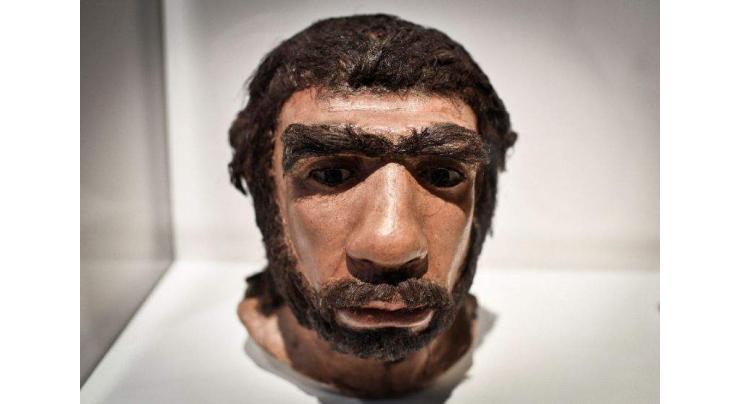
Neanderthal Man Knew How To Make A Fire: Study
Mohammad Ali (@ChaudhryMAli88) Published July 20, 2018 | 02:15 AM

Neanderthal man knew how to make a fire by striking stone to create sparks, researchers said Thursday after analysing several tools found at sites in France dating from 50,000 years ago.
Paris, (APP - UrduPoint / Pakistan Point News - 20th Jul, 2018 ) :Neanderthal man knew how to make a fire by striking stone to create sparks, researchers said Thursday after analysing several tools found at sites in France dating from 50,000 years ago.
It was already known that Neanderthals used fire but it was mostly thought to have occurred by natural causes such as lightning or volcanic eruptions, although perhaps they did know techniques for creating a flame.
The latter is what scientists of a study published in Scientific Reports have claimed.
"We present here the first direct artefactual evidence for regular, systematic fire production by Neanderthals," they wrote in the study.
"We found the lighters that Neanderthal man used to make a fire," Marie Soressi, professor of prehistory at Leiden University in the Netherlands and co-author of the study, told AFP.
The researchers found dozens of flint with traces on the two faces of the prehistoric stone tool, or biface.
They appear to indicate that the tool could have been used to strike at a ferrous mineral such as pyrite or marcasite.
Piercing the pyrite would produce sparks which Neanthal man could make fall on dry grass or leaves and blow on them to get a fire going.
Andrew Sorensen, also from Leiden University and the lead author of the study, says the scientists know the traces on the stone tools were not natural, but instead made by these primitive men living in Europe in late Palaeolithic times.
"The traces we see occur in discrete zones, with the striations almost always oriented parallel to the long axis of the tool. If the scratches were natural, we would expect them to occur all over the surface of the biface and to be oriented randomly," he told AFP in an email.
"The fire making traces appear with the naked eye as clusters of C-shaped percussion marks... often indicating unidirectional, oblique (glancing) blows (ideal for fire making)," he wrote.
Recent Stories

ICC Womens T20 World Cup Qualifier, Match 2: Ireland Women open with Comfortable ..

Robinson, bowlers help New Zealand go 2-1 up against Pakistan

Shahzeb Chachar to hold khuli kachehri on April 26

Heatwave amid Israel's aggression in Gaza brings new misery, disease risk

Tourism must change, mayor says as Venice launches entry fee

Court adjourns Judicial Complex attack case till May 17

Nasreen Noori’s book ‘Popatan Jahra Khwab’ launched

Wafaqi Mohtasib inspection team visits Excise and taxation office

AJLAC announces 5th Conference titled ‘People’s Mandate: Safeguarding Civil ..

Pak-US officials engage to enhance trade, investment ties

IBCC to promote educational excellence, expand regional presence

Pakistani 'Blue Helmets' serving UN Peacekeeping Mission in DR Congo set to leav ..
More Stories From World
-
Bangladesh children sweat at home as heatwave shuts schools
24 minutes ago -
Pakistani 'Blue Helmets' serving UN Peacekeeping Mission in DR Congo set to leave after 20 years of ..
44 minutes ago -
Golf: PGA Zurich Classic of New Orleans scores
54 minutes ago -
Slot 'confident' of Liverpool job as 'negotiations' take place
7 hours ago -
Google parent Alphabet's Q1 profits beat estimates: company
7 hours ago -
WADA asks 'independent prosecutor' to examine Chinese swimmers case
7 hours ago
-
New York court overturns Harvey Weinstein sex crime conviction
7 hours ago -
Bagnaia and Spanish rivals chase victory at Jerez
9 hours ago -
Russian, Ukrainian strikes kill at least 10 in frontline regions
9 hours ago -

Heatwave amid Israel's aggression in Gaza brings new misery, disease risk
9 hours ago -

Tourism must change, mayor says as Venice launches entry fee
9 hours ago -

Pakistani 'Blue Helmets' serving UN Peacekeeping Mission in DR Congo set to leave after 20 years of ..
10 hours ago


